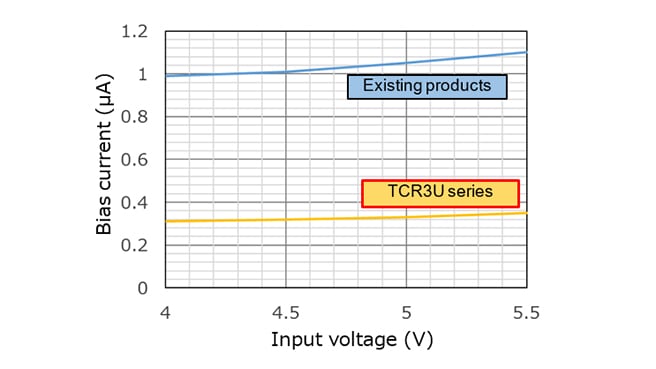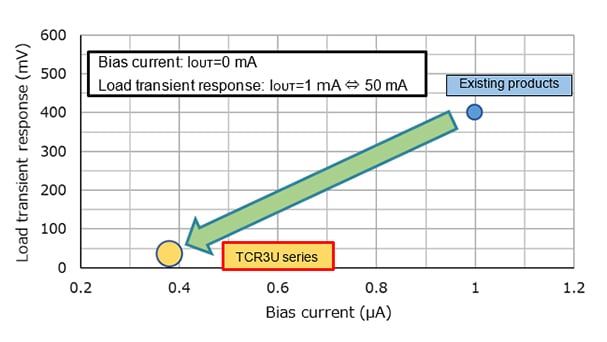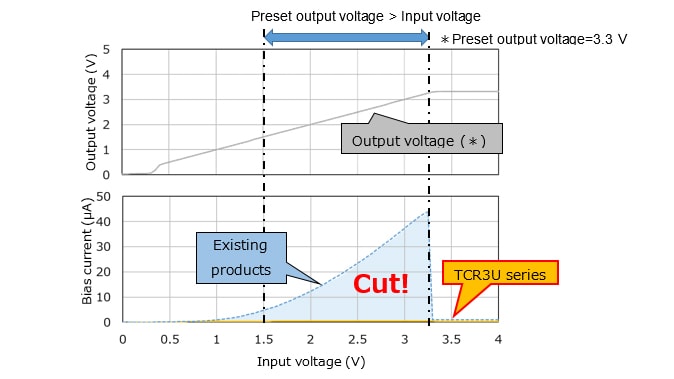- 半導體首頁
-
應用Automotive
Body Electronics
xEV
In-Vehicle Infotainment
Advanced Driver-Assistance Systems (ADAS)
Chassis
IndustrialInfrastructure
BEMS/HEMS
Factory Automation
Commercial Equipment
Consumer/PersonalIoT Equipment
Healthcare
Wearable Device
Mobile
Computer Peripherals
-
產品車用元件
Discrete Semiconductor
Diodes
電晶體
通用邏輯IC
Analog Devices
Digital Devices
Wireless Devices
※
: Products list (parametric search)
功率半導體※
: Products list (parametric search)
隔離器/固態繼電器Photocouplers
Digital Isolators
※
: Products list (parametric search)
MOSFETsIGBTs/IEGTs雙極性電晶體※
: Products list (parametric search)
Diodes※
: Products list (parametric search)
微控制器馬達驅動 ICs智能功率 ICs※
: Products list (parametric search)
電源管理 ICs線性 ICs※
: Products list (parametric search)
通用邏輯 ICs線性影像感測器其他產品其他產品
※
: Products list (parametric search)
-
開發/設計支援
開發 / 設計支援
-
技術知識
- 購買管道
- 型號 & 關鍵字搜尋
- 交叉搜尋
- 參數搜尋
- 線上庫存查詢跟購買
This webpage doesn't work with Internet Explorer. Please use the latest version of Google Chrome, Microsoft Edge, Mozilla Firefox or Safari.
型號需要超過三個文字以上 Search for multiple part numbers fromhere.
The information presented in this cross reference is based on TOSHIBA's selection criteria and should be treated as a suggestion only. Please carefully review the latest versions of all relevant information on the TOSHIBA products, including without limitation data sheets and validate all operating parameters of the TOSHIBA products to ensure that the suggested TOSHIBA products are truly compatible with your design and application.Please note that this cross reference is based on TOSHIBA's estimate of compatibility with other manufacturers' products, based on other manufacturers' published data, at the time the data was collected.TOSHIBA is not responsible for any incorrect or incomplete information. Information is subject to change at any time without notice.
型號需要超過三個文字以上
How to drive battery-powered devices for a long time?
Battery-powered IoT devices are increasingly required to be driven for longer time in addition to their increasingly high functionality.
To meet this requirement, not only on the battery side but also on the device side, it is necessary to reduce the average power consumption by making the standby (sleep) period as long as possible than the active period in which sensing and data communication are performed.
TCR3U series drastically reduces the bias current at no-load from the existing product. In addition, the circuit configuration is such that there is no sudden increase in the bias current seen in the existing product when the input voltage drops below the preset output voltage. On the other hand, it achieves superior load transient response performance despite its low current consumption, and it operates stably even with sudden changes in output current during active operation.
About the bias current

The bias current flows to the input of the LDO regulator when the output current doesn’t flow. It is required to operate the LDO regulator itself.
The output of the LDO regulator is used as a power supply for various functional blocks such as sensing and data communication. However, these functions don’t always operate and may not operate. Since little current flows to the LDO regulator output in this state, measures are taken to reduce the average current (power) consumption of the entire device by shortening the operating period as much as possible. At this time, only the bias current flows from the battery, so this characteristic is important to reduce the current consumption.
TCR3U series has succeeded in significantly reducing bias currents from existing products. In the region where the output current is lower than 20 μA, it is suppressed to 0.4 μA or less, contributing to power saving and long-time driving of the entire device.

In addition, TCR3U series has improved the load transient response characteristics compared to the existing product while reducing the bias current.
In general, reducing the bias current will deteriorate performance of the regulator. One of these is the load transient response, which indicates the magnitude of the fluctuation in the output voltage that occurs when the output current suddenly increases or decreases. While there is a trade-off relationship between the bias current and this property, TCR3UG series has successfully improved both by reviewing the circuit configuration and considering it in detail.

TCR3U series also features that the bias current does not increase when the input voltage drops below the preset output voltage due to a battery depletion etc. In such case, the bias current of the existing products increases rapidly, which causes battery consumption. However, TCR3U Series is designed to have a circuit configuration that prevents this phenomenon from occurring so that the battery life can be extended as much as possible.
Recommended product list
Unless otherwise specified.
@VIN=VOUT+1 V (VOUT>1.5 V), VIN=2.5 V (VOUT≦1.5 V), IOUT=50 mA, CIN=1.0 μF, COUT=1.0 μF
Product Number |
|||||
|---|---|---|---|---|---|
Data sheet |
PDF (418 KB) | ||||
Package |
Name (Package code) |
|
|
|
|
| Size (mm) | 1.0×1.0×0.60 | 0.645×0.645×0.33 | 2.9×2.8×1.1 | ||
Operating range |
Output current (mA) |
0 to 300 |
|||
Output voltage (V) |
0.8 to 5.0 |
||||
| Input voltage (V) | 1.5 to 5.5 | ||||
Electrical Characteristics |
Bias Current (μA) Typ. @IOUT=0 mA |
0.34 |
|||
Dropout Voltage (mV) Typ. @VOUT=3.3 V, IOUT=300 mA |
196 |
140 |
206 | ||
Load Transient Response (mV) Typ. @IOUT=1→50 mA |
-51 |
-60 |
-51 | ||
Load Transient Response (mV) Typ. @IOUT=50→1 mA |
36 |
60 |
36 | ||
文件
參考設計
LDO Regulator TCR3UG Series Application for Power Supply of IoT Devices

